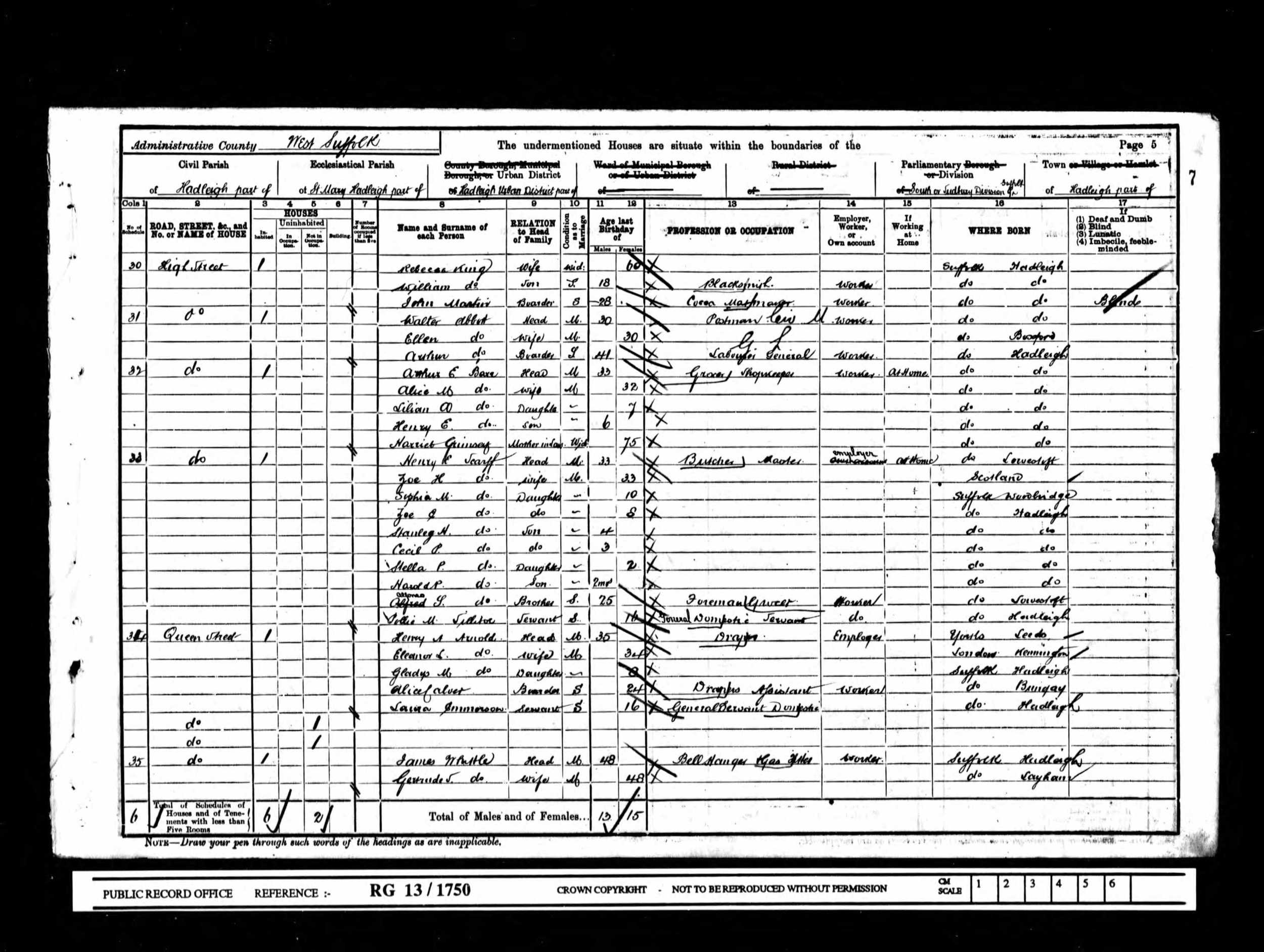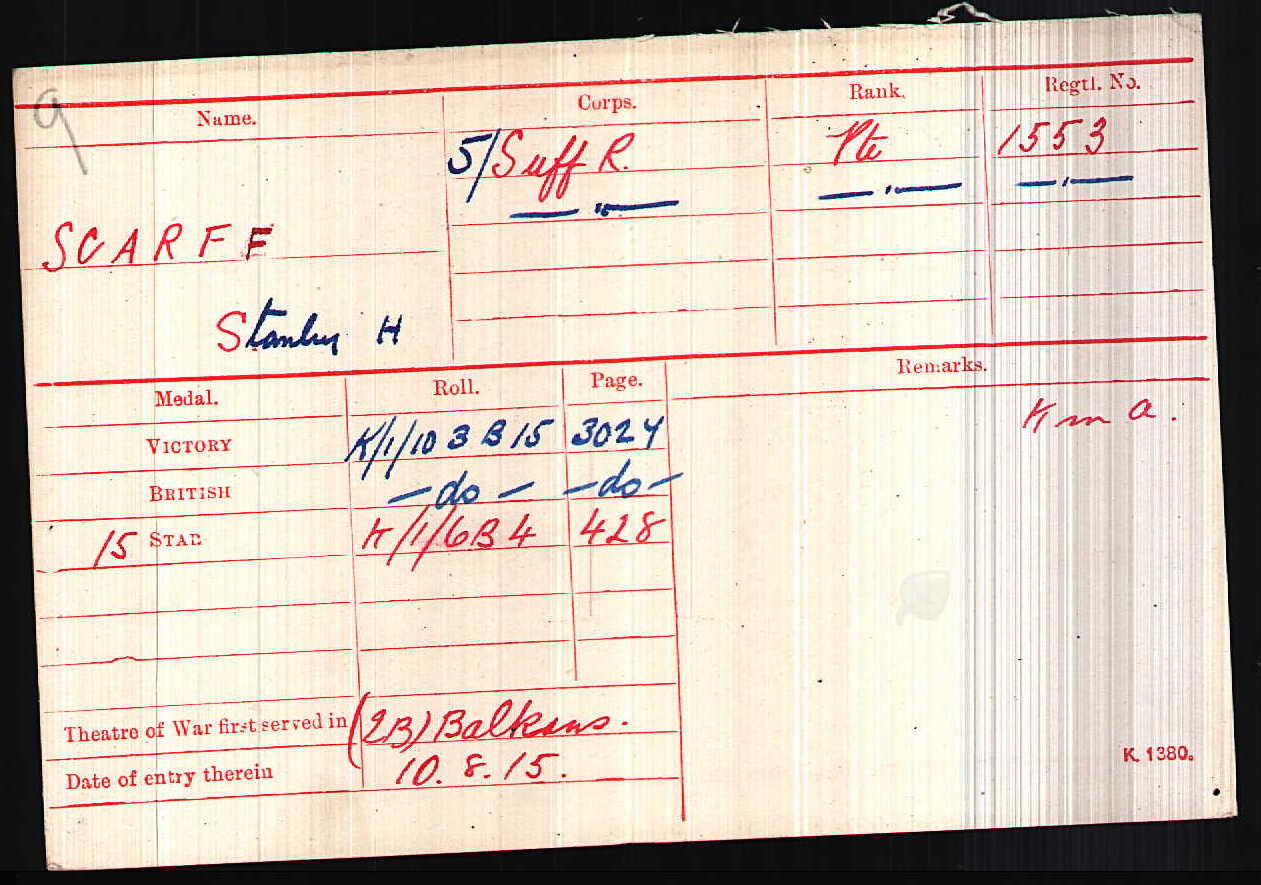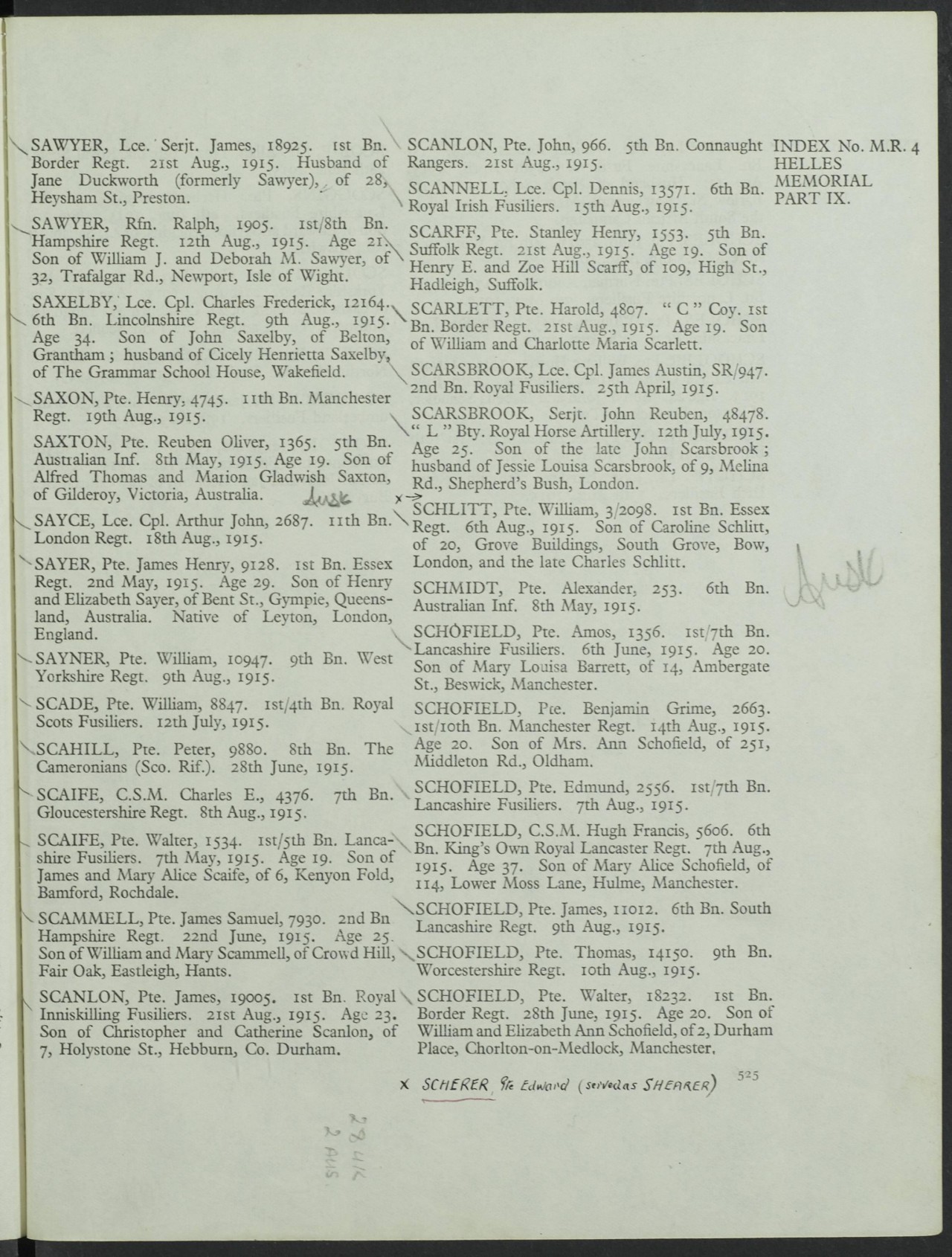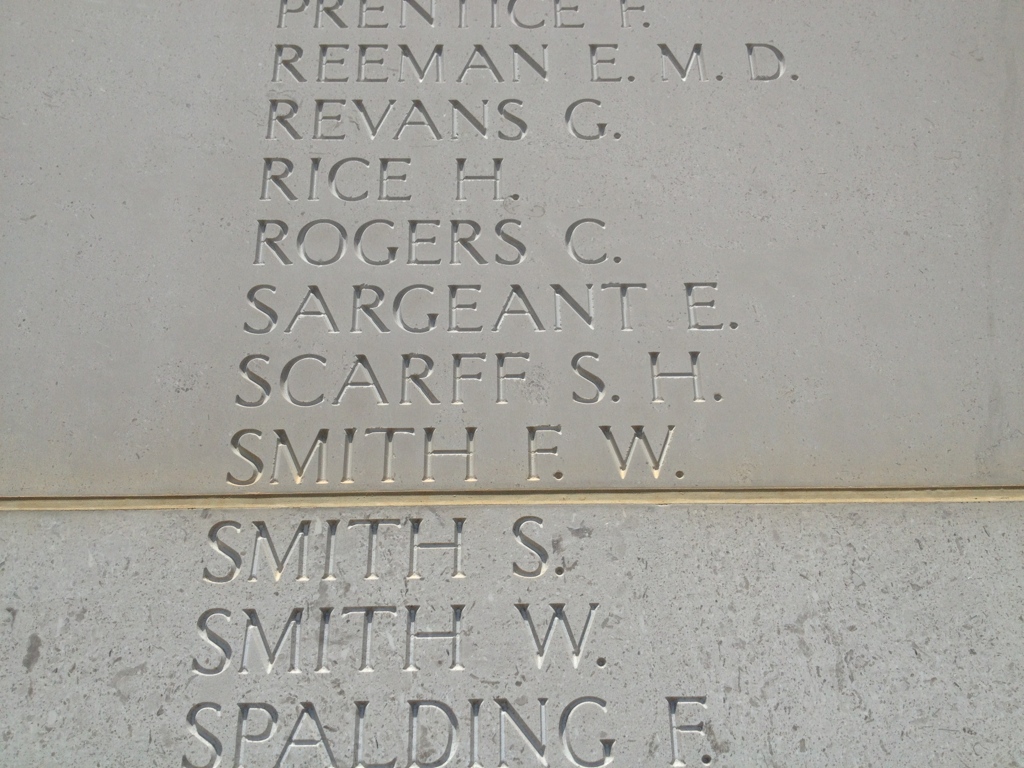Stanley Henry Scarff
Rank: Private
Service Number: 1553
Date of Birth: 1896
Regiment: A Coy, 1/5th Suffolk Regiment
Date of Death: 12 Aug 1915
Age at death: 19
Cemetery / Memorial: Helles Memorial
Country: Gallipoli, Turkey
Grave / Reference: Panel 46 and 47
Relatives: Son on Henry E and Zoe Hill Scarff
Address: 109 High Street, Hadleigh
Stanley was born in Hadleigh in 1896. The 1911 Census report him as living at home with his parents Henry and Zoe and his siblings; Maudi (20), Cecil (13), Stella (12), Harold (10), Flossie (8) and Ronald (5) at 75 High Street, Hadleigh. At that time Stanley was working as a 'Butcher's Lad' at his father's butchers shop on the High Street.
We are not exactly sure when Stanley enlisted into the army, but it seems like many other young men from Hadleigh he joined the local territorial battalion, the 5th Battalion the Suffolk Regiment. Given his age and Regimental number, we believe that Stanley enlisted in 1912 when he was only 16 years old. Service with the local territorial battalion was appealing to some young men as it offered a taste of adventure, camaraderie and best of all a free two-week summer camp each year.
Private Stanley Scarff
If we assume that Stanley had joined the battalion before war broke out then we know that he would have been mobilised on the night of the 4th/5th August 1914.
Once mobilised the 1st/5th Suffolks spent a number of months carrying out home service tasks. At that time territorial units were liable for home service only and were not required to deploy overseas. However, when it became apparent that more troops would be needed for overseas service, the men of the battalion were asked to volunteer. After giving this some serious thought, 72% of the men volunteered and the battalion was redesigned 1st/5th Suffolk Regiment. Those who opted to stay on home service duties only, became the 2nd/5th Suffolks.
The 1st/5th Suffolks completed their training and preparation and were re-equipped for service in the eastern theatre. They embarked along with the rest of 163 Brigade and the 54 Eastern Division at the end of July from Liverpool bound for Gallipoli. They arrived and went ashore at Suvla Bay on 10th August 1915 and were quickly moved forward and by midday on the 12th were manning the forward trenches on the Anafarta Plain.
The remains of a lighter, once used to ferry troops ashore at Suvla Bay
There was at least 75 Hadleigh men involved in this advance and it was a true baptism of fire. They were told it would be a straight forward advance to mop up the odd sniper, but in reality they faced a determined and ruthless enemy. The enemies intimate knowledge of the ground was key. They sniped the Suffolks who could not see the firing points and even if they could, they had no artillery support to combat the snipers. In addition, the Turks made best use of their own artillery which ultimately halted the brigades advance. The Suffolks fell back to a shallow river bed / ditch where they formed the new front line.
A few days later they were relieved and returned to the reserve trenches where they discovered that the attack had cost them dearly; 11 Officers and 178 Other Ranks were killed, wounded or missing. Although official records suggest that many of the Suffolks went missing on or after the 21st Aug, we now believe that they were actually lost during the advance on the 12th
On that day, at least 16 men from Hadleigh were killed. Due to the nature of the fighting, their bodies were never recovered from the battlefield until the early 1920s. By then the remains were unrecognisable and could not be identified. The remains were most likely buried in Azmak Commonwealth War Grave Commission cemetery in an unmarked grave. This cemetery is in the area were the Suffolks held the front line. Their names are commemorated on the impressive Helles Memorial which stands on the southern tip of the Gallipoli peninsular.
Very little is known about the battle however, there is at least one written account in a letter that was sent home and subsequently published in the local press. It describes a desperate situation. We believe that Stanley was one of the first to be killed as there are a couple of witnesses to his death. In the obituary published in the Bury Free Press of 18 September 1915, it claims that Hadleigh Doctor, Dr Everitt who was present in Gallipoli, had seen Stanley after his death. Another Hadleigh man who was related to Stanley by marriage, Fred Holborn who was also present in Gallipoli, told relatives when he returned home that he actually witnessed Stanley being shot. Which must have been a dreadful experience for him to witness.
Fred Holbrow, Gallipoli survivor and witness to the death of Stanley Scarff.
Landing beach at Suvla Bay
At 4pm they were ordered forward as part of a 163 Brigade operation to clear the Plain of snipers in preparation for a much larger Divisional operation that was planned for the following day. The battalion was on the left of the brigade line and 'A' Company made up of Hadleigh men were in the first wave. There was at least 75 Hadleigh men involved and this was a true baptism of fire. They were told it would be a straight forward advance to mop up the odd sniper, but in reality they faced a determined and ruthless enemy. The enemies intimate knowledge of the ground was key. They sniped the Suffolks who could not see the firing points and even if they could, they had no artillery support to combat the snipers. In addition, the Turks made best use of their own artillery which ultimately halted the brigades advance. The Suffolks fell back to a shallow river bed / ditch where they formed the new front line.
Obituary
Interestingly, the obituary also refers to Stanley's involvement with Hadleigh Town Football Club. He was by accounts written in the Bury Free Press of the day a very good footballer. Another example of lost youth.
Stanley Scarff's Medal Index Card
Helles Memorial
The whereabouts of Private Stanley Henry Scarff's Medals are not known, however, he was entitled to the above three medals.




















